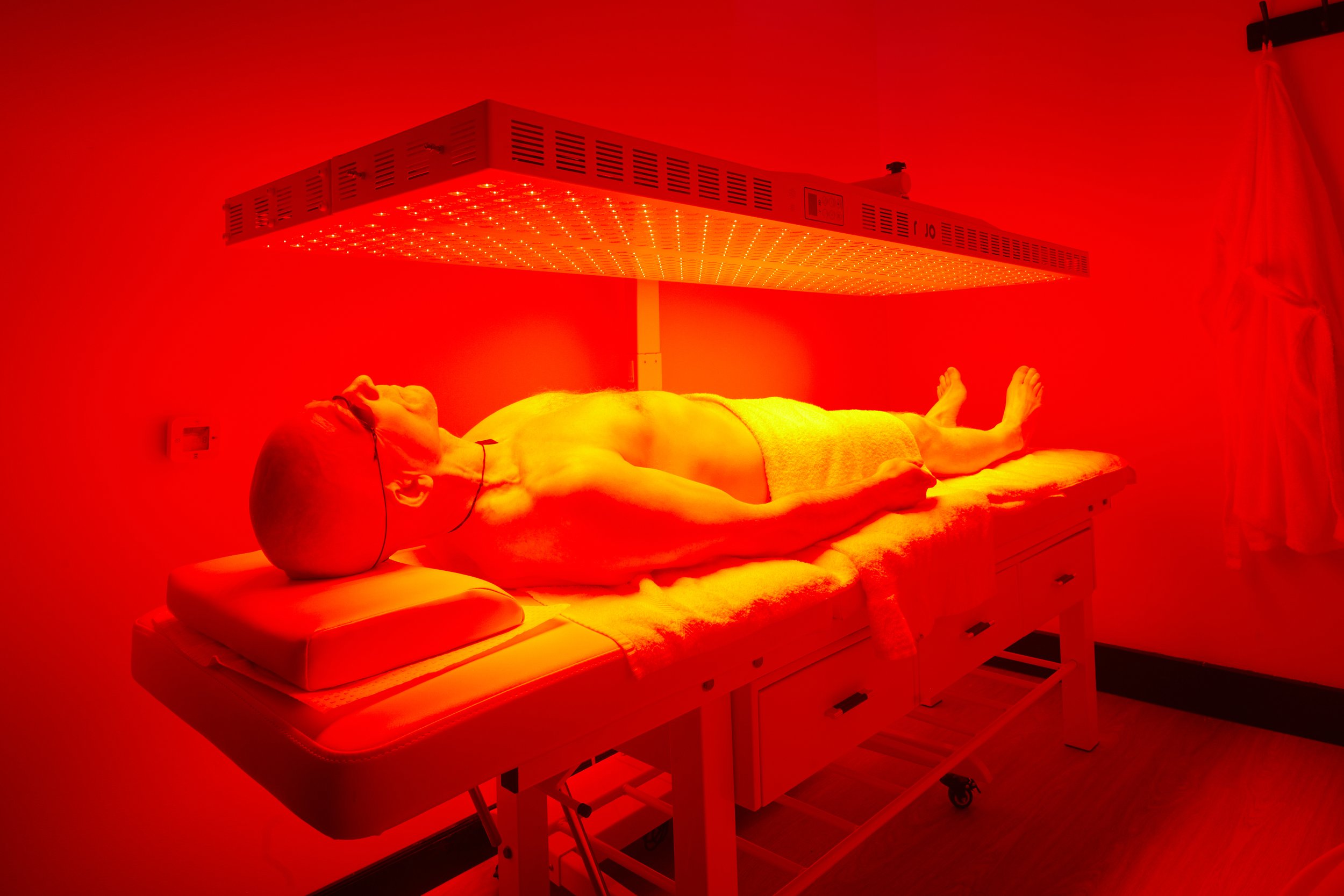
PhotoBiomodulation Red Light +Hydrogen Inhalation
PhotoBiomodulation Red Light uses red or near-infrared wavelengths of light, which are absorbed by cells, to stimulate and support cellular energy production. This reinforcement at a cellular level optimises cellular processes which support physical and mental well-being.
How Does Red Light works?
PhotoBiomodulation Red Light exposes your body and cells to red or near-infrared light in the form of lights and lasers. This treatment is also known as low-level laser session or cold laser session. Here, the specific wavelengths of red and near-infrared light are absorbed by cells and induce PhotoBiomodulation (PBM).
PhotoBiomodulation is a process whereby photo receptors, activated by red or near-infrared light, stimulate ATP production in the cell. A boost in ATP, the primary energy source of cells, stimulates cellular regeneration and healing.
Furthermore, RLT promotes nitric oxide release as a result of increased mitochondrial function, which dilates blood vessels, facilitating increased blood flow. This accelerates the rate at which oxygen, nutrients, and immune cells are delivered to tissues and enables efficient toxin removal.
Other key functions of PhotoBiomodulation Red Light include assisting in the regulation of melatonin production, which plays a key role in our circadian rhythm and sleep cycles, as well as improving our immune response by increasing the production of anti-inflammatory cytokines.
To complement the benefits of PBM, Hydrogen Inhalation Therapy will also be integrated into your session. Molecular hydrogen (H₂) is administered through a nasal cannula to support the body’s antioxidant defences and reduce inflammation. Acting as a selective antioxidant, hydrogen helps neutralise harmful oxidative stress without disrupting beneficial physiological processes. This synergistic effect further enhances tissue oxygenation, mitochondrial health, and post-session recovery.
What to Expect:
Session: During a PhotoBiomodulation Red Light session, you will lie on a bed wearing protective glasses and minimal clothing under red and near-infrared light panels, which emit visible red light. A nasal cannula will be gently placed to deliver molecular hydrogen throughout your session. PhotoBiomodulation Red Light is pain-free, and you may experience a mild warming sensation.
Monitoring: Throughout the session, our trained staff will monitor your experience.
Duration: A PhotoBiomodulation Red Light session will take 30 minutes.
PBM + Hydrogen Inhalation Key Targets:
Increased energy production in the cells
Reduced inflammation
Stimulated collagen production
Improved blood flow and circulation
Reduced oxidative stress
Promoted tissue repair
Supported pain management
For more information:
C, Moncrieff L, Matys J, Grzech-Leśniak K, Kocherova I, Bryja A, Bruska M, Dominiak M, Mozdziak P, Skiba THI, Shibli JA, Angelova Volponi A, Kempisty B, Dyszkiewicz-Konwińska M. Photobiomodulation-Underlying Mechanism and Clinical Applications. J Clin Med. 2020 Jun 3;9(6):1724. doi: 10.3390/jcm9061724. PMID: 32503238; PMCID: PMC7356229. https://pubmed.ncbi.nlm.nih.gov/32503238/
MR. Mechanisms and applications of the anti-inflammatory effects of photobiomodulation. AIMS Biophys. 2017;4(3):337-361. doi: 10.3934/biophy.2017.3.337. Epub 2017 May 19. PMID: 28748217; PMCID: PMC5523874. https://pubmed.ncbi.nlm.nih.gov/28748217/
Tafur J, Mills PJ. Low-intensity light therapy: exploring the role of redox mechanisms. Photomed Laser Surg. 2008 Aug;26(4):323-8. doi: 10.1089/pho.2007.2184. PMID: 18665762; PMCID: PMC2996814. https://pubmed.ncbi.nlm.nih.gov/18665762/
Zanini D., Todorovic N., Korovljev D., Stajer V., Ostojic J.,Purac J., Kojic D., Vukasinovic E., Djordjievski S., Sopic M., Guzonjic A., Ninic A., Erceg S., Ostojic S. M. The effects of 6-month hydrogen-rich water intake on molecular and phenotypic biomarkers of aging in older adults aged 70 years and over: A randomized controlled pilot trial. Experimental Gerontology, Volume 155, November 2021, 111574.
https://doi.org/10.1016/j.exger.2021.111574
Hirano S., Ichikawa Y., Sato B., Takefuji Y, Satoh F,. Molecular Hydrogen as a Medical Gas for the Treatment of Myalgic Encephalomyelitis/Chronic Fatigue Syndrome: Possible Efficacy Based on a Literature Review. 2022 Apr 11;13:841310.
doi: 10.3389/fneur.2022.841310

